Asia is home to some of the most exotic, vibrant, and flavorful fruits on the earth. Asian exotic fruits range from the creamy sweetness of mangosteen to the spiky mystery of durian; these fruits offer a delightful blend of taste, tradition, and nutrition.
Although, most people outside the region have only scratched the surface of this rich and colourful bounty. These are truly nature’s candy, presenting incredible natural sweetness and a host of health benefits.
In this post, we’ll take a delicious deep dive into the world of exotic Asian fruits, covering where to buy them, how to eat them, their health benefits, seasonal availability, and the rich cultural stories behind them. Whether you are a curious foodie, a health-conscious eater, or just someone looking for new tropical treats—this guide is for you.
- What Are Exotic Asian Fruits?
- Where to Buy Your Asian Exotic Fruits:
- Top 10 Asian Exotic Fruits You Must Try:
- 24 Exotic Asian Fruits You Might Not Know:
- Health Benefits: Why You Should Eat Exotic Fruits:
- Seasonal Chart of Asian Exotic Fruits:
- How to Eat Asian Fruits (Beginner Tips):
- The Cultural Stands Behind These Fruits:
- Your Delicious Journey Awaits:
- Frequently Asked Questions (FAQs):
What Are Exotic Asian Fruits?
Exotic fruits typically refer to those that are rare, region-specific, and not commonly found in Western grocery stores. Asian exotic fruits originate from countries such as Thailand, Malaysia, Indonesia, the Philippines, China, Japan, India, and Vietnam, each offering its unique twist on tropical sweetness.
Where to Buy Your Asian Exotic Fruits:
You do not need a passport to taste these fruits to travel Asia. Today, many exotic Asian fruits are available internationally, bringing their unique flavours closer to you.
Online Options:
- Melissa’s Produce: Known for fresh selections like mangosteens, rambutans, and lychees.
- Miami Fruit: Delivers a wide array of tropical fruits, including dragon fruit, jackfruit, and many more, often directly to your door.
- Amazon and Etsy: Great for finding dried or freeze-dried versions of exotic fruits, such as durian chips, mango slices, or jackfruit pieces, perfect for snacking or adding to recipes.
- iHerb & FruitStand: These platforms sometimes stock seasonal fresh or processed exotic fruits, so it’s worth checking their rotating selections.

In-Store Options (USA/Canada/UK):
- H-Mart or 99 Ranch Market: These large Asian supermarkets offer the widest variety of fresh, exotic Asian fruits.
- Whole Foods often carries seasonal selections, such as starfruit or dragon fruit.
- Local Chinatown or Indian Markets: These are excellent places to find fresh jackfruit, guava, and longan, often at competitive prices.
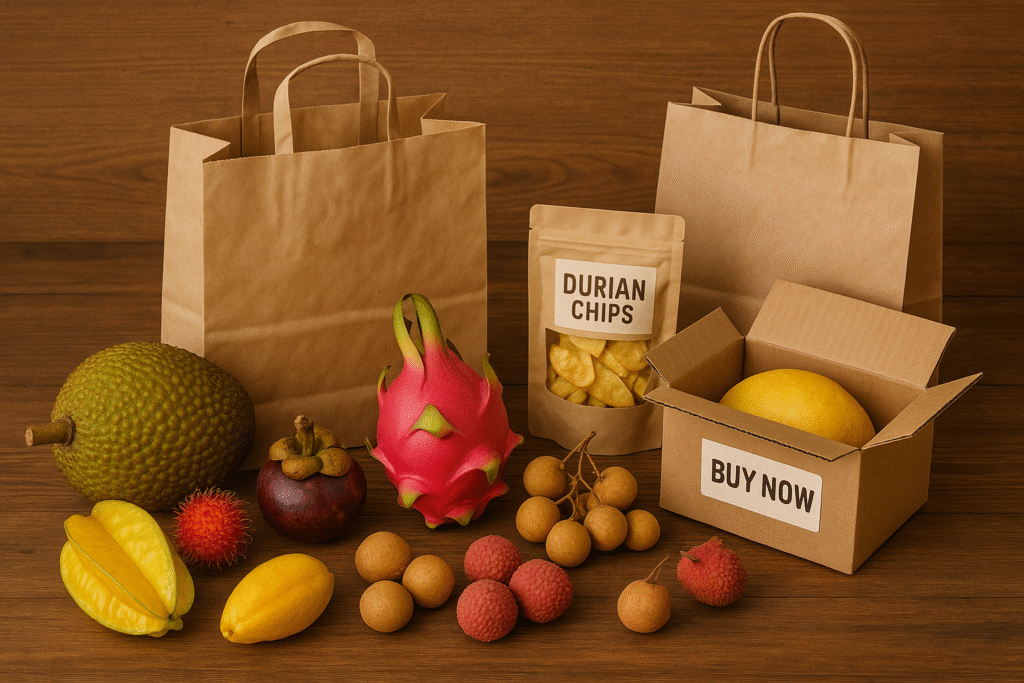
Top 10 Asian Exotic Fruits You Must Try:
Ready to embark on a flavour adventure? Discover, 10 must-try Asian exotic fruits, along with their taste profiles, uses, health benefits, and fascinating cultural insights.
- Lychee (Native to China)
- Taste: Juicy, translucent flesh with a delicate floral sweetness.
- Uses: Commonly enjoyed fresh, added to drinks, or used in desserts. It makes a fantastic addition to fruit salads or even cocktails.
- Health Benefits: Packed with vitamin C and antioxidants, supporting immunity and skin health.

2. Rambutan (Native to Malaysia/Indonesia):
- Taste: Hairy red skin reveals sweet, juicy flesh, closely related to lychee but often slightly more acidic.
- Uses: Best eaten fresh; peel the skin and enjoy.
- Health Benefits: A good source of vitamin C and fibre.
- Cultural Insight: A summer market favourite across Southeast Asia.
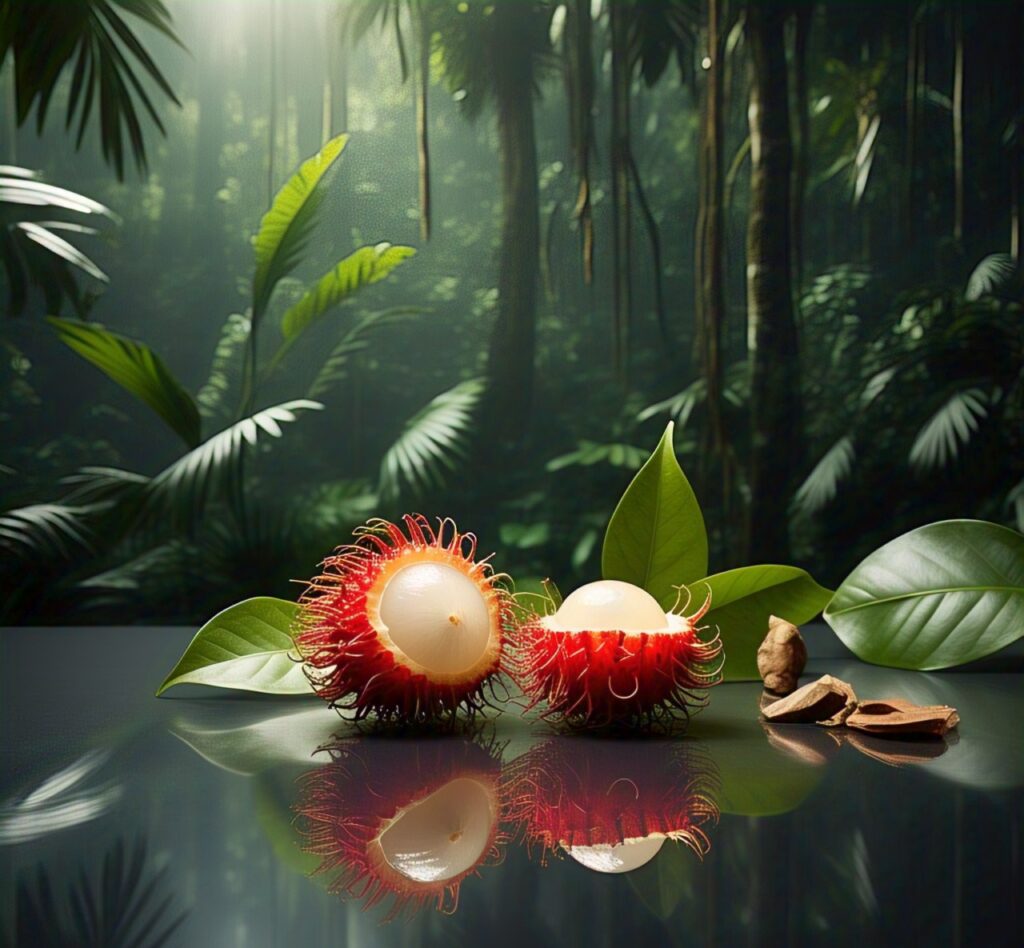
3. Longan (Native to Southern China)
- Taste: Its name translates to “dragon’s eye” in Chinese, referring to its distinctive appearance. It has translucent, juicy pulp with a musky sweetness.
- Uses: Great fresh or used in teas, soups, and dried as a snack.
- Health Benefits: Rich in vitamin C and magnesium, known for helping to calm nerves and promote better sleep.

4. Salak (Snake Fruit) (Native to Indonesia)
- Taste: Covered in reddish-brown scaly skin, its crisp, tangy flesh has an apple-like texture.
- Uses: Primarily eaten fresh or sometimes pickled.
- Health Benefits: Great for energy and fiber.
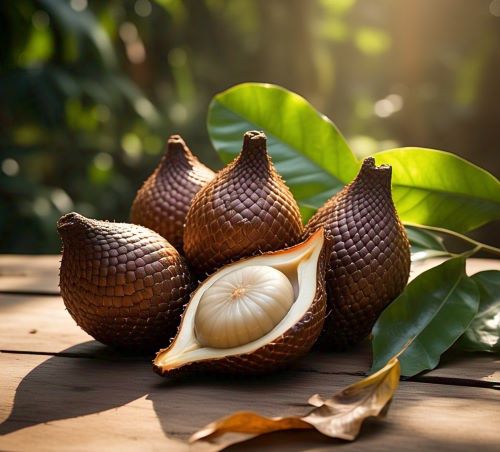
5. Tamarind (Naturalized in India)
- Taste: A sticky, brown pulp with a distinctive, sharp, tangy flavour.
- Uses: A staple in chutneys, curries, drinks, and sauces, providing a unique sour note.
- Health Benefits: Rich in tartaric acid and antioxidants.

6. Phalsa (Grewia asiatica) (Native to Pakistan/North India)
- Taste: A small, purple berry with a refreshing, cooling, sweet-sour flavour.
- Uses: Traditionally used in refreshing sherbets and summer drinks.
- Health Benefits: Loaded with vitamin C and calcium.

7. Pomelo (Native to Southeast Asia)
- Taste: The largest citrus fruit with a thick rind. Its juicy segments offer a mildly sweet or tart flavour, less bitter than grapefruit.
- Uses: Common in Thai, Vietnamese, and Chinese cuisine, often in salads or as a fresh snack.
- Health Benefits: High in vitamin C and potassium.
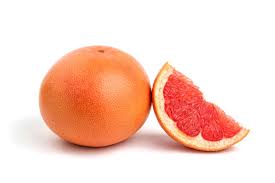
8. Langsat (Lanzones) (Native to Malaysia/Indonesia)
- Taste: These grape-like clusters of translucent fruit have a sweet-tart flavour with a slight bitterness reminiscent of grapefruit.
- Uses: Often enjoyed fresh, especially popular in the Philippines.
- Health Benefits: Contains vitamins A and C.
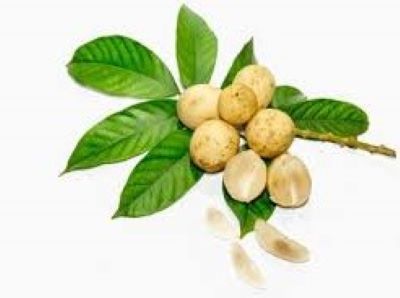
9. Sugar Apple (Sweetsop) (Naturalized in Southeast Asia)
- Taste: A knobby green skin covers creamy, fragrant flesh that tastes remarkably like vanilla custard with soft seeds.
- Uses: Best eaten fresh; scoop out the pulp.
- Health Benefits: An excellent source of vitamin B6 and dietary fibre.
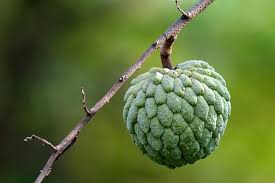
10. Rose Apple (Jambu) (Native to Malaysia/Indonesia)
- Taste: A crisp, bell-shaped fruit with a subtle rose-water aroma. Extremely hydrating and low in calories.
- Uses: Eat raw, in tropical fruit salads, or for a refreshing crunch.
- Health Benefits: High water content makes it an excellent choice for hydration.
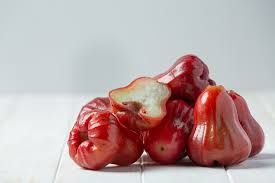
24 Exotic Asian Fruits You Might Not Know:
While our “Top 10” offers a delicious starting point, Asia’s fruit bounty extends far beyond the familiar. Ready to expand your fruit palate and your fruit knowledge as we unveil an extensive list of 24 more unique Asian exotic fruits?
Each fruit is a testament to the continent’s incredible biodiversity, presenting a glimpse into the regional flavours and hidden gems that await your discovery. From the common market finds to the truly obscure, this table invites you on a deeper dive into nature’s most captivating edible treasures.







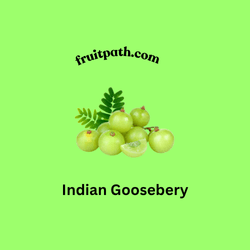




| N o | Fruit Name | Description | Native Country/Region |
| 1 | Mangosteen | Sweet-tart purple fruit with juicy white pulp. Known as the “Queen of Fruits” in Southeast Asia. | Southeast Asia (Malaysia, Indonesia) |
| 2 | Durian | Strong smell, creamy flesh. Revered as the “King of Fruits,” a symbol of luxury and status in Southeast Asia. | Borneo & Sumatra (Indonesia/Malaysia) |
| 3 | Jackfruit | Massive fruit with sweet or savory flesh. In India, it’s associated with abundance and often used in religious offerings. | India/Bangladesh |
| 4 | Dragon Fruit (Pitaya) | Vibrant skin with seedy flesh. Associated with good fortune and protection in Vietnamese culture due to its striking appearance. | widely grown in Vietnam & Thailand |
| 5 | Starfruit (Carambola) | Star-shaped, sweet-sour fruit. | Philippines/ Indonesia/Malaysia |
| 6 | Sapodilla (Chikoo) | Malty flavor with soft texture. | Grown in India & Southeast Asia |
| 7 | Santol | Sour-sweet pulp, cottony texture. | Philippines/ Indochina |
| 8 | Bael (Wood Apple) | Aromatic fruit used in Ayurveda. In India, the bael tree is considered sacred in Hinduism, with its leaves and fruit often used in religious rituals and offerings to Lord Shiva. | India/Sri Lanka |
| 9 | Jujube (Chinese Date) | Small, chewy, sweet fruit. In China, it symbolizes wealth, prosperity, and good luck. | China |
| 10 | Indian Gooseberry (Amla) | Sour, rich in vitamin C. Highly revered in Ayurveda for its medicinal properties, often called “Dhatri” (the nurse) for its nourishing qualities. | India |
| 11 | Kaffir Lime | Aromatic citrus used for zest/leaves. | Southeast Asia |
| 12 | Mangoes (certain varieties | Sweet, juicy fruit with a rich flavor. | South Asia/Southeast Asia |
| 13 | Persimmon | Orange, jelly-textured fruit. In Japan, dried persimmons are believed to bring good luck. | China, Korea, Japan |
| 14 | Buddha’s Hand | Citrus with finger-like sections. Symbolizes happiness, longevity, and good fortune in China and Japan, often used as an offering in Buddhist temples. | Northeastern India/China |
| 15 | Kamias (Bilimbi) | Extremely sour green fruit. | Indonesia/Philippine |
| 16 | Noni | Pungent fruit with medicinal value. | Southeast Asia & Australasia |
| 17 | Soursop | Soft, creamy pulp with sweet flavor. | Southeast Asia/India |
| 18 | Malay Apple | Glossy, red crisp fruit. | Malaysia |
| 19 | Calamansi | Tiny lime-like citrus. | Philippines |
| 20 | Yuzu | Fragrant citrus for culinary use. | China, cultivated in Japan & Korea |
| 21 | Loquat | Juicy, sweet-tart fruit. | Southeastern China |
| 22 | Marang | Related to jackfruit, soft sweet pulp. | Philippines/Borneo |
| 23 | Gac Fruit | Spiky orange-red fruit rich in antioxidants. Known as “fruit from heaven” in Vietnam due to its exceptional nutritional value. | Vietnam |
| 24 | Ice Apple (Tadgola) | Jelly-like fruit from Palmyra palm. A cooling fruit widely consumed in South India during summer, believed to prevent dehydration. | India/Sri Lanka |




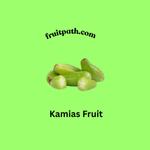


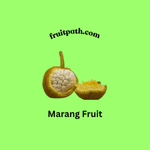




Health Benefits: Why You Should Eat Exotic Fruits:
Beyond their delightful flavors, Asian exotic fruits are nutritional powerhouses, offering a unique blend of vitamins, minerals, and antioxidants. Here’s a quick comparison of key nutrients and health benefits in 10 popular varieties:
| Fruit | High In | Known For |
| Mangosteen | Xanthones, Vitamin C | Anti-inflammatory, immunity support, cellular health |
| Durian | Fiber, B Vitamins, Potassium | Energy boost, muscle function, digestion |
| Dragon Fruit | Antioxidants, Iron, Fiber | Skin health, metabolism support, gut health |
| Lychee | Polyphenols, Vitamin C | Heart health, promoting a natural skin glow, immunity |
| Longan | Vitamin C, Magnesium | Calming nerves, promoting better sleep, antioxidant properties |
| Rambutan | Vitamin C, Copper, Fiber | Immunity boost, red blood cell formation, digestion |
| Salak | Fiber, Vitamin C, Beta-carotene | Digestion, eye health, energy |
| Tamarind | Tartaric Acid, B Vitamins, Iron | Digestive aid, antioxidant properties, energy metabolism |
| Phalsa | Vitamin C, Calcium, Iron | Immunity, bone health, traditional cooling properties |
| Pomelo | Vitamin C, Potassium, Fiber | Immunity, heart health, hydration |
Seasonal Chart of Asian Exotic Fruits:
Knowing when these fruits are in season can help you find them at their freshest and most flavorful. This chart highlights the peak seasons for some of the most popular and readily available Asian exotic fruits.
| Fruit | Peak Season | Grown In |
| Mangosteen | May–August | Thailand, Indonesia, Malaysia |
| Durian | June–August | Malaysia, Thailand, Indonesia |
| Lychee | May–July | China, Vietnam, Thailand |
| Rambutan | June–September | Malaysia, Philippines, Thailand |
| Starfruit (Carambola) | Sept–February | Philippines, India, Indonesia |
| Longan | June–October | Southern China, Vietnam, Thailand |
| Salak (Snake Fruit) | May–December (year-round with peak) | Indonesia, Malaysia, Thailand |
| Tamarind | March–April (pods ripen) | India, Thailand, widespread |
| Pomelo | Late Oct–Feb (Winter) | Southeast Asia, China |
| Sugar Apple | Mid-Summer–Fall | Southeast Asia, India |
| Jackfruit | March–June / April–Sept | India, Southeast Asia, Mexico |
| Dragon Fruit | June–September (year-round with peak) | Vietnam, Thailand, Central America |
How to Eat Asian Fruits (Beginner Tips):
Don’t be intimidated by their unusual appearances! Here are some practical tips for enjoying Asian exotic fruits, along with advice on ripeness and storage.
| Fruit | How to Eat | What to Keep in Mind | Ripeness & Storage Tips |
| Durian | Cut open carefully, use a spoon to scoop creamy pulp. | Be prepared for its intense aroma; often eaten outdoors. | Ripeness: Strong smell, soft but not mushy to the touch. Storage: Keep whole at room temperature; once cut, refrigerate quickly in an airtight container. |
| Mangosteen | Twist to open, eat the juicy white pulp. | Don’t eat the bitter purple rind. | Ripeness: Skin should have a slight give when pressed. Storage: Refrigerate for up to a week. |
| Rambutan | Peel the hairy red skin, remove the pit. | Don’t bite the hard central pit. | Ripeness: Bright red, hairs might have green tips. Storage: Refrigerate in a plastic bag. |
| Jackfruit | Cut open carefully (it’s sticky!), wear gloves, separate pods. | Sap can stain hands and knives; use oil on hands. | Ripeness: Strong, sweet aroma; slight give to skin. Storage: Refrigerate ripe portions; unripe can be stored at room temp. |
| Longan | Crack the thin shell, eat the translucent flesh. | Discard the hard black seed. | Ripeness: Skin should be smooth and intact. Storage: Refrigerate in a breathable bag. |
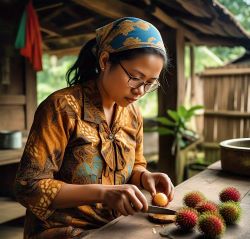



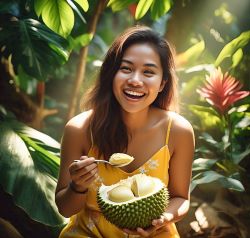
The Cultural Stands Behind These Fruits:
As mentioned earlier, Asian exotic fruits are more than just food; they are deeply intertwined with the cultural fabric of the regions where they grow.
- Durian Fruit: Revered as the “King of Fruits,” it’s known for its luxury and royalty, often seen as a status symbol in Southeast Asia.
- Mangosteen Fruit: The people of the region are often called the “Queen of Fruits,” it’s thought to “cool” the body in traditional Thai medicine, balancing the “heat” of Durian.
- Lychee Fruit: A symbol of love and romance in Chinese history and folklore, often given as a gift.
- Dragon Fruit: Its vibrant characteristics are associated with good fortune, prosperity, and protection in Vietnamese culture.
- Jackfruit: In India, it’s associated with abundance fertility, and the Indians have frequently used jackfruit in religious offerings and ceremonies.
Your Delicious Journey Awaits:
Exploring exotic Asian fruits is truly like taking a bite out of the continent’s deep cultural, medicinal, and culinary heritage. From the royal mangosteen to the often misunderstood Durian, each fruit has a unique story, a captivating flavour, and a season waiting to be discovered.
So, next time you spot a spiky, oddly-shaped, or vibrant new fruit—don’t hesitate. Give it a try! You might just uncover your new favourite natural candy and embark on a delicious journey through nature’s hidden gems.
Frequently Asked Questions (FAQs):
1. Are Asian exotic fruits healthy?
Yes! They’re packed with essential vitamins, potent antioxidants, and beneficial fibre. Many also offer anti-inflammatory benefits, supporting digestion and immunity, making them excellent additions to a healthy diet.
2. Can I grow these fruits at my home?
Some, like dragon fruit or starfruit, can be grown in warm climates (USDA zones 9–11). Others, like Durian, need particular tropical environments and are typically best enjoyed when imported.
3. Is it safe to eat these fruits if I have allergies?
Always try a small amount first, especially if you have food sensitivities. People with latex allergies may react to fruits like jackfruit or rambutan. If you’re unsure or have known allergies, it’s always best to consult a doctor.
4. What’s the smelliest Asian fruit?
That would unequivocally be Durian! Its intense aroma is so strong that it’s famously banned in many hotels and public transport in Southeast Asia—though its devoted fans find the smell irresistible.
5. Which Asian exotic fruit is best for beginners?
If you are new to the world of Asian exotic fruits, start with lychee, dragon fruit, or mangosteen. They’re generally sweet, fragrant, and easy to prepare and eat, offering a gentle introduction to these unique flavours.

